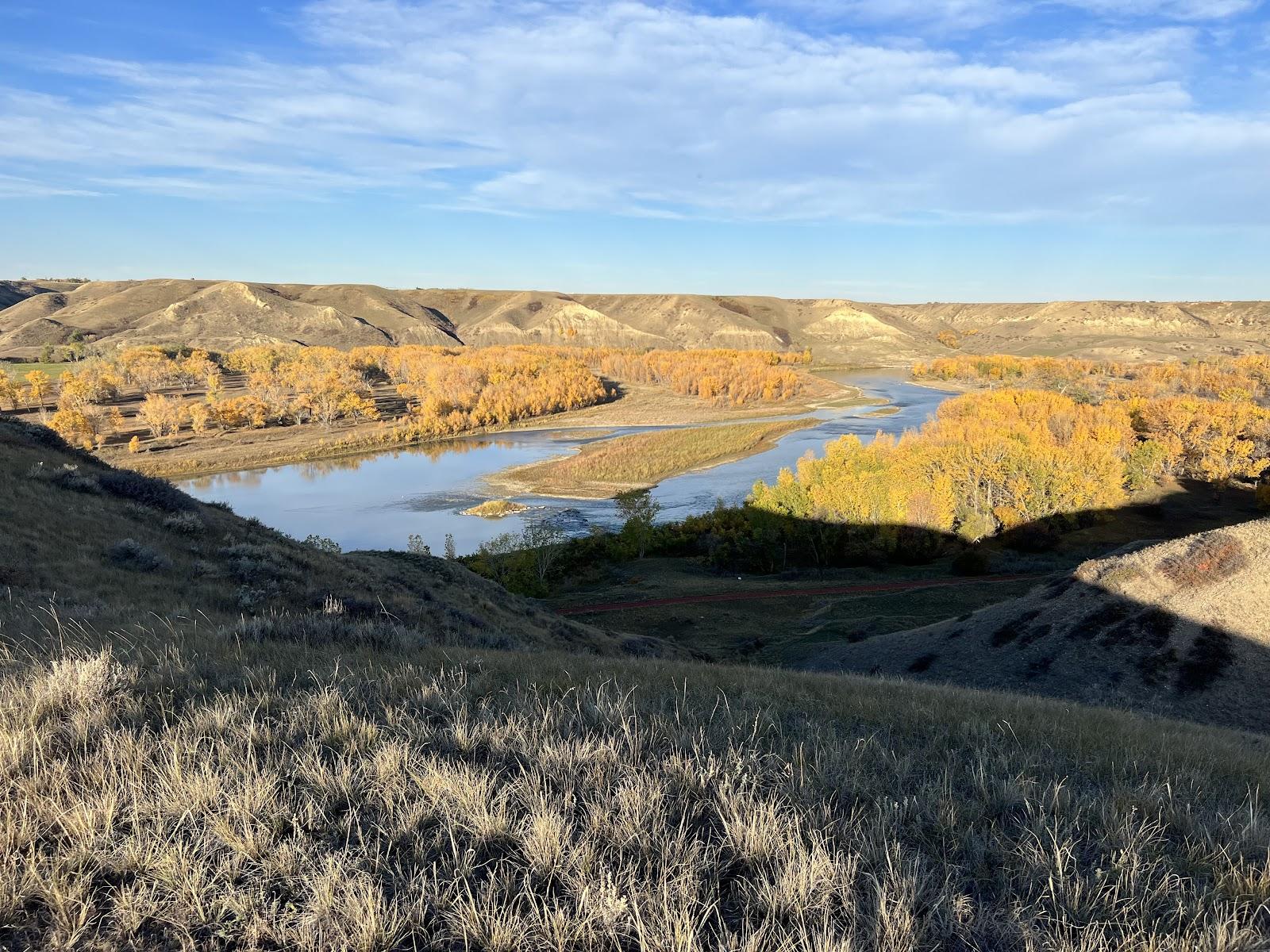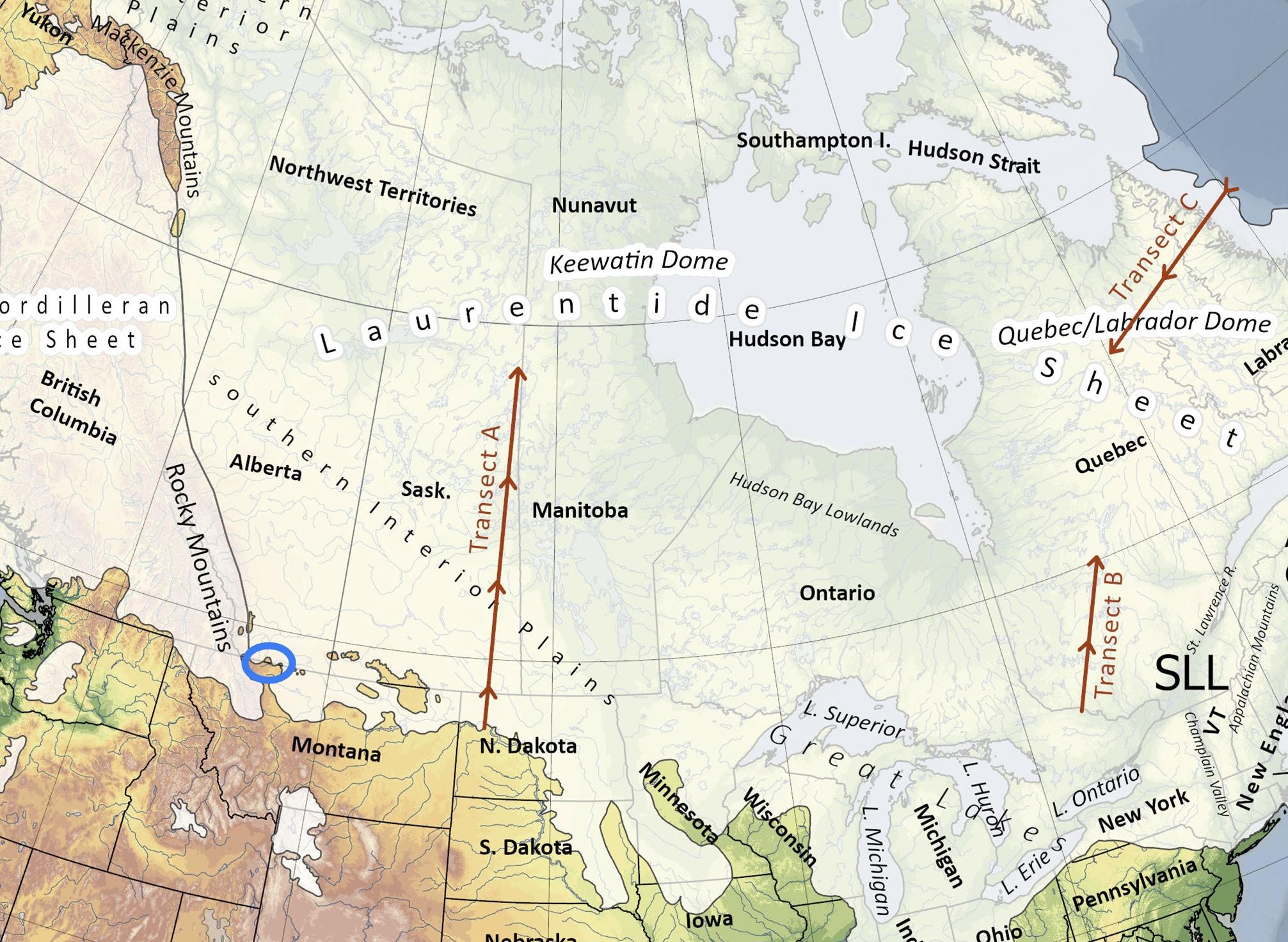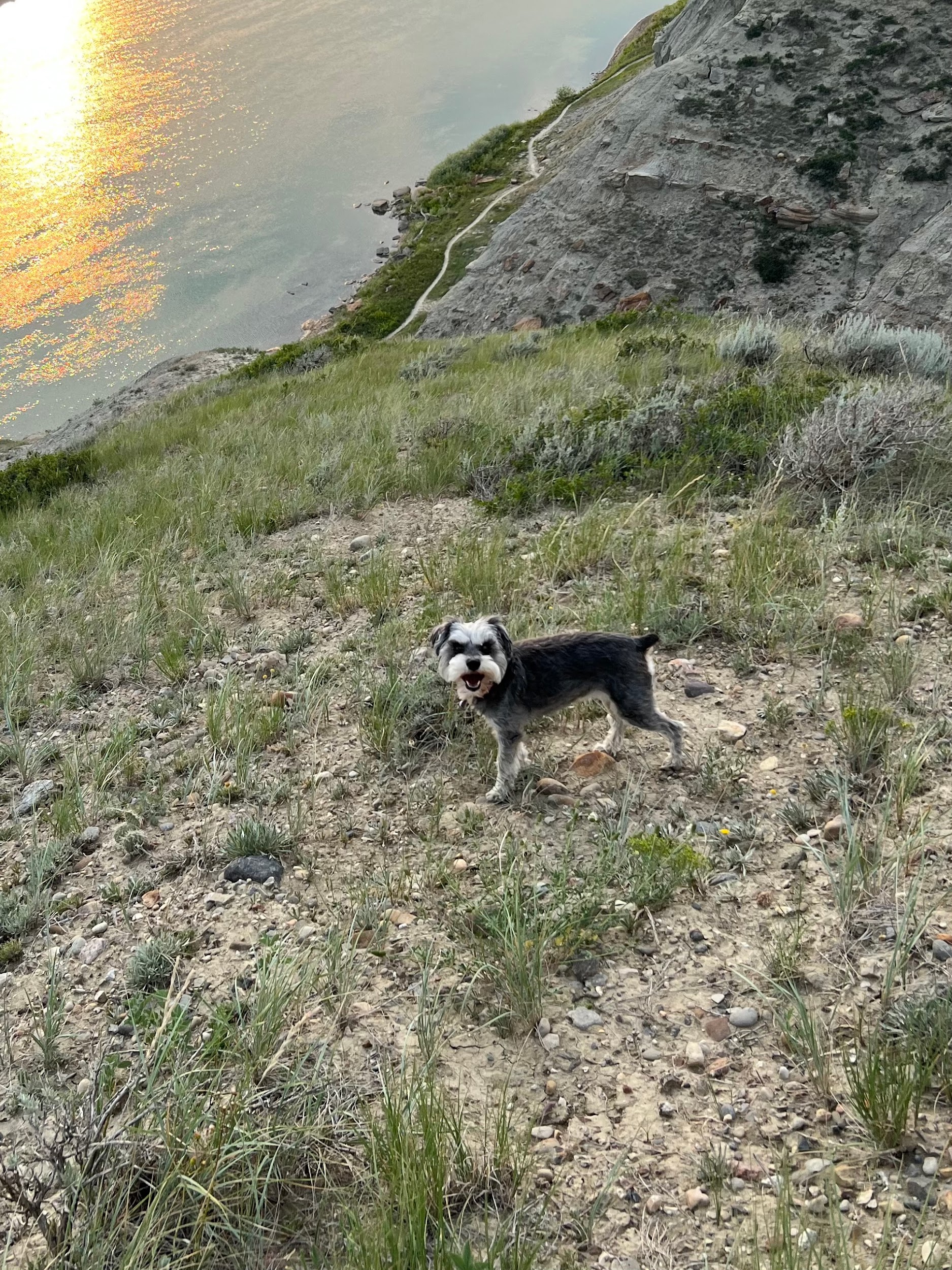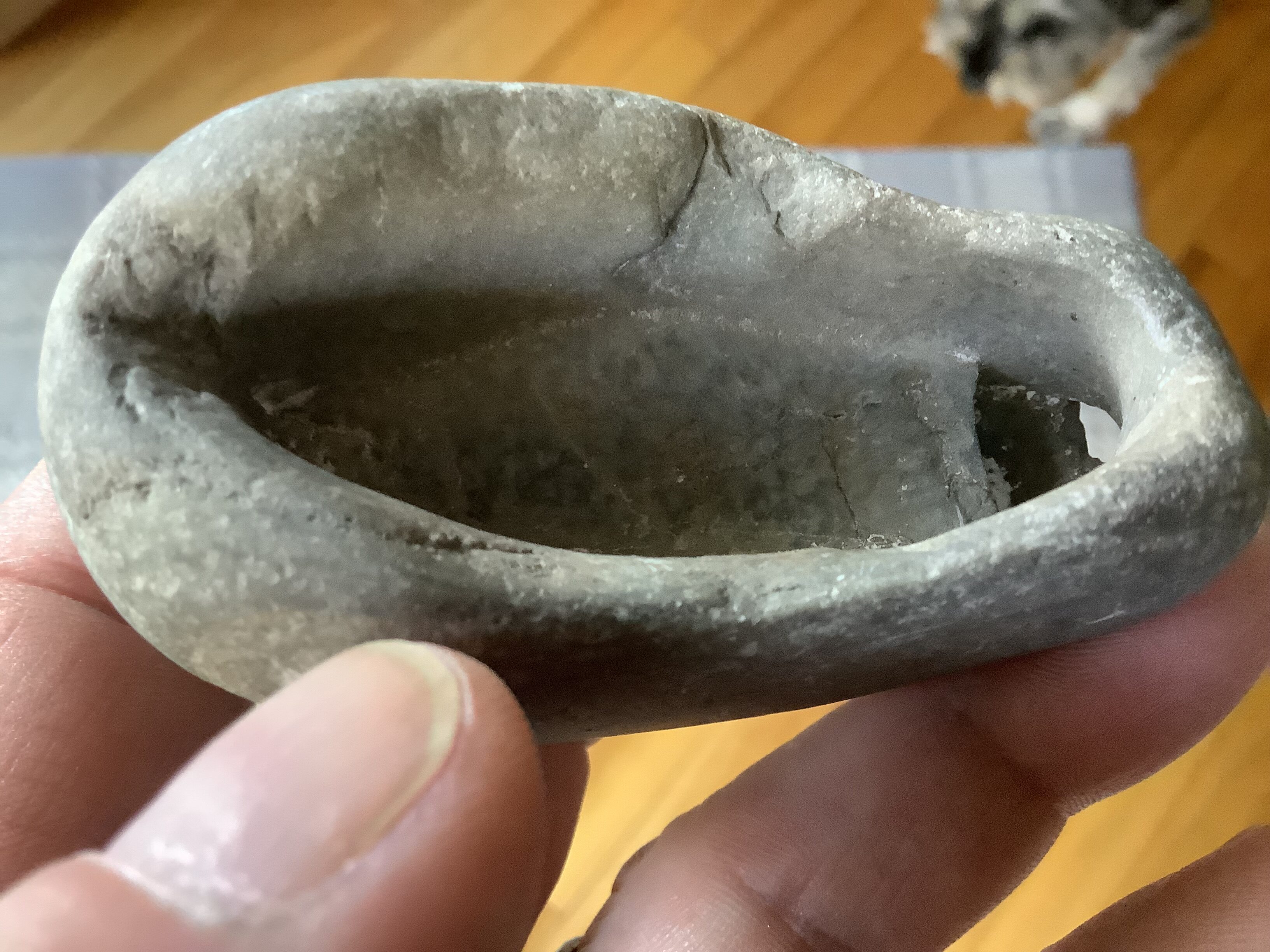The site
I have found a site with clear, verifiable, evidence that North America was inhabited by a large group of individuals long before the last glacial maximum which occurred about 20,000 years ago.
I have spent the last 5 years critically analyzing the cobbles I find being exposed on the trails I walk daily with my dogs in the local river valley The cobbles I find have historically been labelled glacial erratic’s because they do not belong here. The local geology is primarily sandstone. The cobbles I find are slowly being exposed by erosion in strata that is below the glacial debris left from the last glacial maximum which occurred approximately 20,00 years ago. What I found is that some of these cobbles are not just random rocks, they are lithic tools with all the marks and features you would expect to find on tools that have been shaped by our early ancestors. These marks and features are easy to see and are the same marks and features you will see on “authenticated” tools on display in museums and private collections around the world.
Because of the quantity, quality and distribution of the tools I find I believe I have found a campsite. A campsite that was suddenly abandoned leaving behind the the vast majority of the lithic tools that were used in the occupants everyday life. These tools are in pristine shape, they are organized into repeating groups and many show clear signs of usage. This includes, Points, scrapers, knives, spoke shaves, burins, polishers, abraders, grinders, mortars, pestles, platters, bowls, axes, hammerstones, netherstones and, what I believe represent, spoons.. you read that correctly, spoons. I find these tools in various sizes from micro to macro and regardless of size the same shaped tools share similar marks and features in the same areas.
My analysis of these tools indicates that the people who inhabited this site and made and used these tools were artists and craftsmen. They had incredibly fine motor skills and remarkable visual acuity. They lived in a well established, organized group with a rich symbolic culture and they travelled and or traded over large portions of North America. They were individuals with a sense of pride in what they possessed. Their tools were an important part of their individuality. They had the time and the resources required to not only sustain their life but to thrive in their environment. The material they chose and tools they made clearly show their skill and individuality.
I live in Southern Alberta, Canada and due to oil exploration the geology of the area is very well documented.
According to the Geological Survey of Canada Bulletin 583,
The Interior Plains are underlain by flat-lying Upper Cretaceous sandstone and shale thousands of metres thick. Its surface morphology is characterized by vast expanses of flat and very gently rolling surfaces cut by melt-water coulees and major river valleys that are 50 to100 m deep (Beaty, 1975).

It is an interesting location being right at the beginning of the interior plains and on the terminal edge of both the Laurentide and Cordilleran ice sheets that formed during the last glacial maximum. My location is circled in blue.

I live next to the Oldman River which is a major river in the area. I find these tools as they are being exposed in the soft, sandy strata that is being slowly eroded away on the coulee banks and the trails that I walk daily with my wife and our two dogs. Coulees that were created primarily by the melting of the Laurentide ice sheet.

I found a site where there is an incredible diversity in the geological makeup of each piece of rock I pick up. No two pieces are alike or appear to be from the same parent material. Even though each piece is unique in its geological structure and geographic origin I find repeating groups of similarly sized, shaped and featured rocks. These are repeating, complex, multi angular shapes with the same features and marks in the same areas regardless of the geological material they are made from.
Repeating features like size, shape, striations, concave groves, a well defined balance point and residual material and staining are often repeated very accurately from piece to piece.
I believe this needs repeating…I can show you a site where you will find rocks that were individually selected from every direction and then these “chosen” rocks were dropped off in the same area at the same geologic time organized into groups that repeat in shape, size and complex features.
When I look closely at how these repeating shapes were formed I see classic, lithic tool marks like pecking, flaking by chipping and grinding marks and features like striations, polishing, concave grooves, residual material and staining. These marks and features are often very easy to feel and see. I have critically looked at literally thousands of these cobbles and I have thousands of pictures that, I believe clearly shows what I am seeing. The pictures do not however show the subtle nuances of features like polished areas and balance points that you feel and see when you hold one of these tools in your hand.
